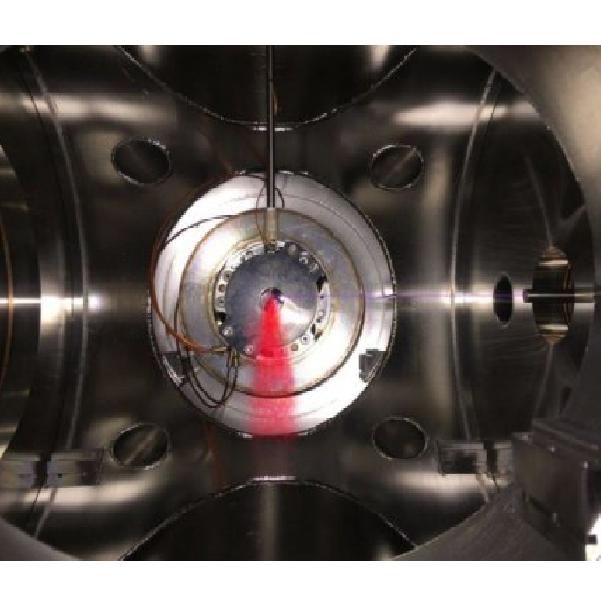
© Marcus IsingerInside the vacuum chamber.
In a unique experiment, researchers have clocked how long it takes for an electron to be emitted from an atom.
The result is 0.00000000000000002 seconds, or 20 billionths of a billionth of a second. The researchers' stopwatch consists of extremely short laser pulses. Hopefully, the results will help to provide new insights into some of the most fundamental processes in nature.
Researchers from Lund, Stockholm and Gothenburg in Sweden have documented the incredibly brief moment when two electrons in a neon atom are emitted.
"When light hits the atom, the electrons absorb the energy from the light. An instant later the electrons are freed from the binding powers of the atom. This phenomenon, called photoionization, is one of the most fundamental processes of physics and was first theoretically mapped by Albert Einstein, who was awarded the Nobel Prize in Physics in 1921 for this particular discovery," says Marcus Isinger, doctoral student in attophysics at Lund University in Sweden.
Photoionization is about the interaction between light and matter. This interaction is fundamental to photosynthesis and life on Earth -- and enables researchers to study atoms.
"When atoms and molecules undergo chemical reactions, the electrons are the ones that do the heavy lifting. They regroup and move to allow new bonds between molecules to be created or destroyed. Following such a process in real time is a bit of a holy grail within science. We have now come one step closer," says Marcus Isinger.
Although neon is a relatively simple atom with a total of ten electrons, the experiment required both extremely careful timing, with a level of accuracy within one billionth of a billionth of a second (known as an attosecond), and extremely sensitive electron detection that could distinguish between electrons whose speed differed only by around one thousandth of an attojoule (a millionth of an electron's stationary energy).
The finding confirms several years of theoretical work and shows that attophysics is ready to take on more complex molecules.
"Being able to observe how molecules exchange electrons during a chemical reaction opens the door to completely new types of studies of a number of fundamental biological and chemical processes."The new measuring technique circumvents the limitation formulated by the father of quantum physics, Werner Heisenberg, in 1927. According to "Heisenberg's uncertainty principle," it is not possible to determine the position and the speed of an electron at the same instant. However, now, the Swedish researchers have shown that it can, in fact, be done: through superposition (i.e. interference) of two short pulses of light with different wavelengths.

Reader Comments
to our Newsletter